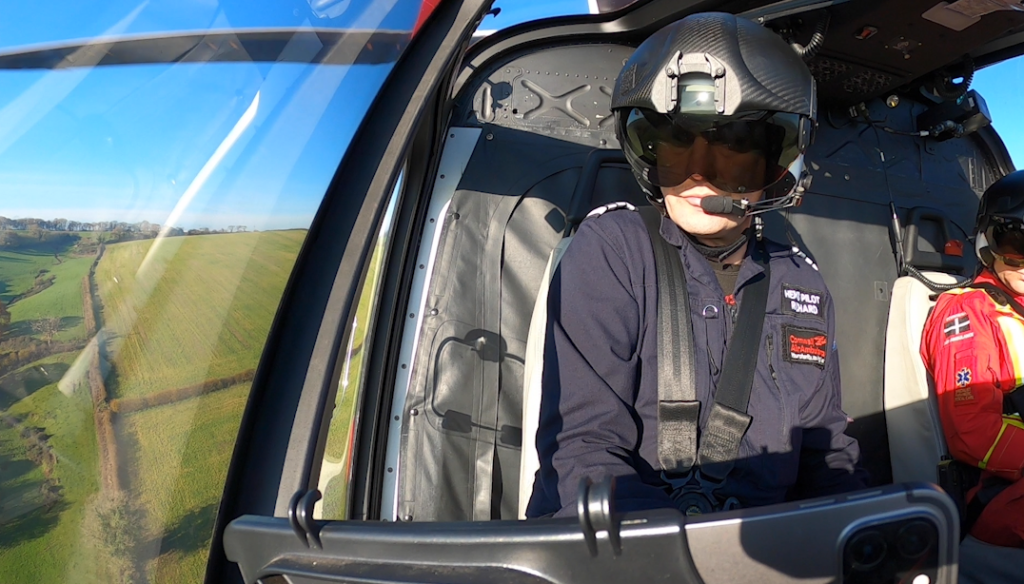A Day in the Life of a Pilot – Rich Dixon

SEARCH BLOG POSTS
SEARCH BY CATEGORIES
SEARCH BY MONTH
Pilot Rich Dixon talks us through a typical day shift, from morning safety checks, to briefing the clinical crew, analysing flight conditions and how he prepares your helicopter for a lifesaving mission.
“You’re doing something with a helicopter that ultimately helps people, right now the aircraft is ready to go, in 10 minutes’ time I could be airborne with the rest of the crew, flying off to somewhere I don’t know about yet.”
The first thing that I tend to do on any shift is give the helicopter a good once over, as you would with your car, to make sure everything is good and it’s ready to fly. So that’s everything from a general look around, the blades go very fast so I make sure nothing has been hit there and there’s no damage, I make sure all the dampers and controls for the rotors are working. I have a look at the engines on both sides of the aircraft and make sure the oil levels are okay. I’ll check for any damage at the back on the aircraft, checking the oil levels through the sight glasses at the back and on the side.
After I’ve finished checking the aircraft over, I have to sign for all the work that I’ve done on it to say the aircraft is ready and fit to fly for the day. After that I check the weather and brief the crew about what we can expect for the day. So we will look at the Met Office charts, and get lots of different detail about wind strength, cloud, visibility and the sea state, that can affect us with things like getting out to the Isles of Scilly or how much time we spend over water. We need to know that the airspace around us is safe, so anything that is happening around us here in Newquay or around the hospitals.
What happens when the red phone rings?
If the weather is fine and we know we can get anywhere, the aircraft will normally be out on the helipad, so I’ll walk out, all the checks have been done, so it’s pretty much ready to turn the batteries on and start it up. During that start up process is normally when the rest of the crew join me, I’ll find out where the job is, and we’ll head off from there. Usually, it’s around five minutes from the phone going to being ready to lift. If the weather is poor, I’ll chat to the crew about what the most appropriate means of getting to the patient is.
The other high-tech piece of machinery I get to play with is the tractor, which we use for towing the helicopter in and out of the hangar. That’s how we move the helicopter around and about as we need to.
Other things that I’ll do during the day, I’ll be keeping an eye on the weather and if anything changes with that, I’ll look at any sort of training that we might need to do as a crew. We cover 19 hours a day, so that is broken into a day shift and a late shift, so in the afternoon I’ll be getting things ready for the late pilot to come on, so if the phone goes at shift handover time, then the new crew are ready to go and the information they need is ready. And from time to time, I do have time for a coffee as well!